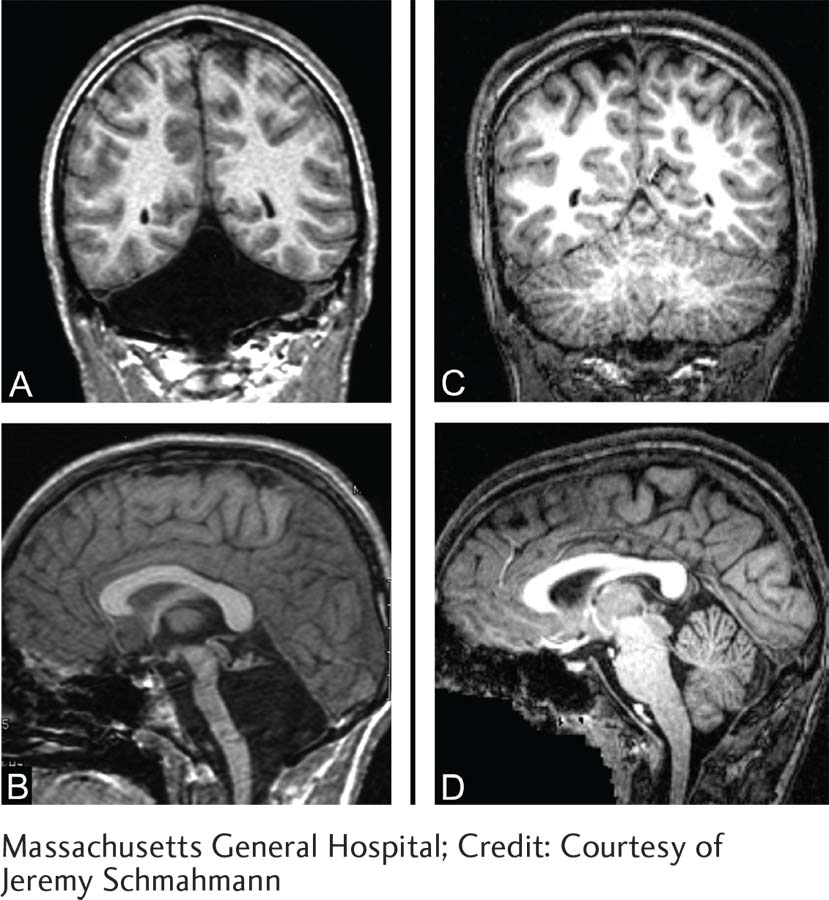Chapter Introduction
What Is the Nervous System’s Functional Anatomy?
RESEARCH FOCUS 2-
PLASTIC PATTERNS OF NEURAL ORGANIZATION
FUNCTIONAL ORGANIZATION OF THE NERVOUS SYSTEM
THE BRAIN’S SURFACE FEATURES
THE BASICS FINDING YOUR WAY AROUND THE BRAIN
CLINICAL FOCUS 2-
THE BRAIN’S INTERNAL FEATURES
CLINICAL FOCUS 2-
STAGES IN BRAIN EVOLUTION
THE NERVOUS SYSTEM AND INTELLIGENT BEHAVIOR
EXPERIMENT 2-
SPINAL CORD
BRAINSTEM
FOREBRAIN
CEREBRAL CORTEX
BASAL GANGLIA
LIMBIC SYSTEM
OLFACTORY SYSTEM
CRANIAL NERVES
SPINAL NERVES
SOMATIC NERVOUS SYSTEM CONNECTIONS
INTEGRATING SPINAL FUNCTIONS
CLINICAL FOCUS 2-
ANS: BALANCING INTERNAL FUNCTIONS
ENS: CONTROLLING THE GUT
PRINCIPLE 1: THE NERVOUS SYSTEM PRODUCES MOVEMENT IN A PERCEPTUAL WORLD THE BRAIN CONSTRUCTS
PRINCIPLE 2: NEUROPLASTICITY IS THE HALLMARK OF NERVOUS SYSTEM FUNCTIONING
PRINCIPLE 3: MANY BRAIN CIRCUITS ARE CROSSED
PRINCIPLE 4: THE CNS FUNCTIONS ON MULTIPLE LEVELS
PRINCIPLE 5: THE BRAIN IS SYMMETRICAL AND ASYMMETRICAL
PRINCIPLE 6: BRAIN SYSTEMS ARE ORGANIZED HIERARCHICALLY AND IN PARALLEL
PRINCIPLE 7: SENSORY AND MOTOR DIVISIONS PERMEATE THE NERVOUS SYSTEM
PRINCIPLE 8: THE BRAIN DIVIDES SENSORY INPUT FOR OBJECT RECOGNITION AND MOTOR CONTROL
PRINCIPLE 9: BRAIN FUNCTIONS ARE LOCALIZED AND DISTRIBUTED
PRINCIPLE 10: THE NERVOUS SYSTEM WORKS BY JUXTAPOSING EXCITATION AND INHIBITION

2-1
Agenesis of the Cerebellum
When an adult’s brain is damaged, as for example in traumatic brain injury, we see a pattern of behavioral changes that offer insight into brain functions, as described by Fred Linge in Clinical Focus 1-1, Living with Traumatic Brain Injury. Naturally occurring brain injuries rarely remove a single structure completely, leaving the rest of the brain intact. However, agenesis, the failure of brain regions to develop, offers researchers a unique window on the brain’s organization and function, because in rare cases a complete structure is absent yet the rest of the brain appears normal.
Historically, the cerebellum was viewed as a motor structure, with the most obvious sign of damage being ataxia, a failure of muscular coordination and balance. But the cerebellum’s functions are much more extensive than movement control (e.g., Schmahmann, 2010). Adult patients with damage to the cerebellum do have motor disturbances, but they also have cognitive deficits, for example, in abstract thinking and language and in emotional control.
The cerebellum contains the most neurons of any brain region, accounting for 80 percent of the neurons in humans and a whopping 97.5 percent of elephants’ neurons—
The accompanying images contrast the brain of a young man born with agenesis of the cerebellum (A and B) to the brain of a person whose brain developed normally (C and D). Even lacking 80 percent of his neurons, the young man’s behavioral capacities are remarkable, but his behavior is not typical. Now in his thirties, he has an office job and lives alone. He has a distinctive speaking pattern, an awkward gait, and difficulties with balance, as well as deficits in planning and abstract thinking. His social skills and long-
Studies of other people with cerebellar agenesis reveal a heterogeneous set of symptoms, but neuropsychological assessments show behavioral deficits reminiscent of people with damage to frontal and parietal cortical regions (e.g., Baumann et al., 2015), even though these cerebral regions are intact. Although people with cerebellar agenesis develop slowly, they show remarkable improvement over time and seem able to compensate for many of their symptoms. The individual whose brain you see in images A and B had severe visuomotor spatial disabilities as a child and adolescent, but by age 30 he showed significant improvement (Chheda et al., 2002; Schmahmann et al., 2007; Jeremy D. Schmahmann and Janet C. Sherman, personal communication). Other patients’ language develops slowly.

In people with absence of the cerebellum it is thought that brain plasticity in response to early perturbations emerge as regions of the cerebral cortex begin to function more efficiently. In fact, it has been reported that cerebellar agenesis patients appear to have some of the symptoms of autism early in life. This observation comports with evidence that dysfunction (rather than absence) of the cerebellum is related to autism (detailed in Clinical Focus 8-2, Autism Spectrum Disorder).
Throughout this book we examine the nervous system with a focus on function—